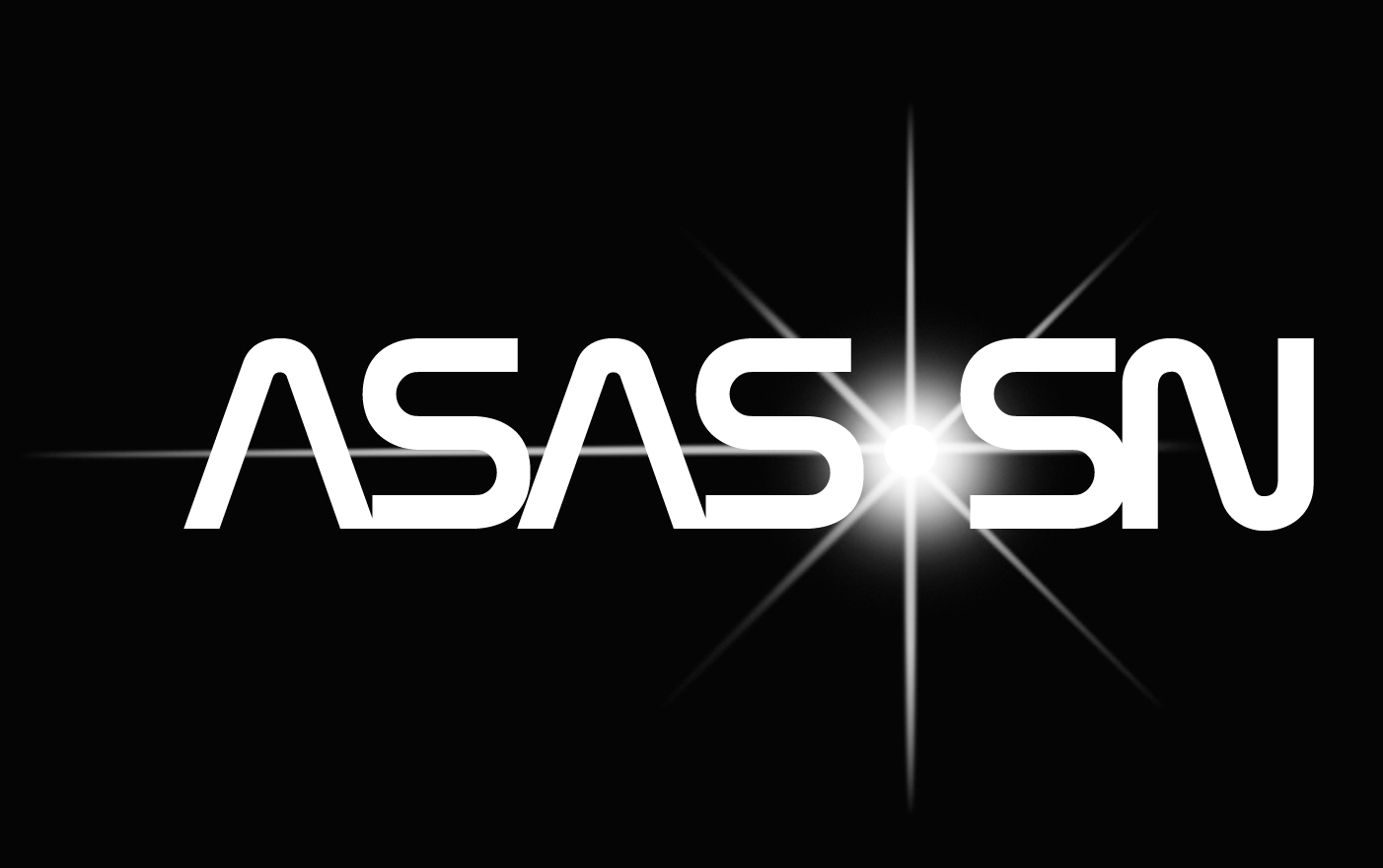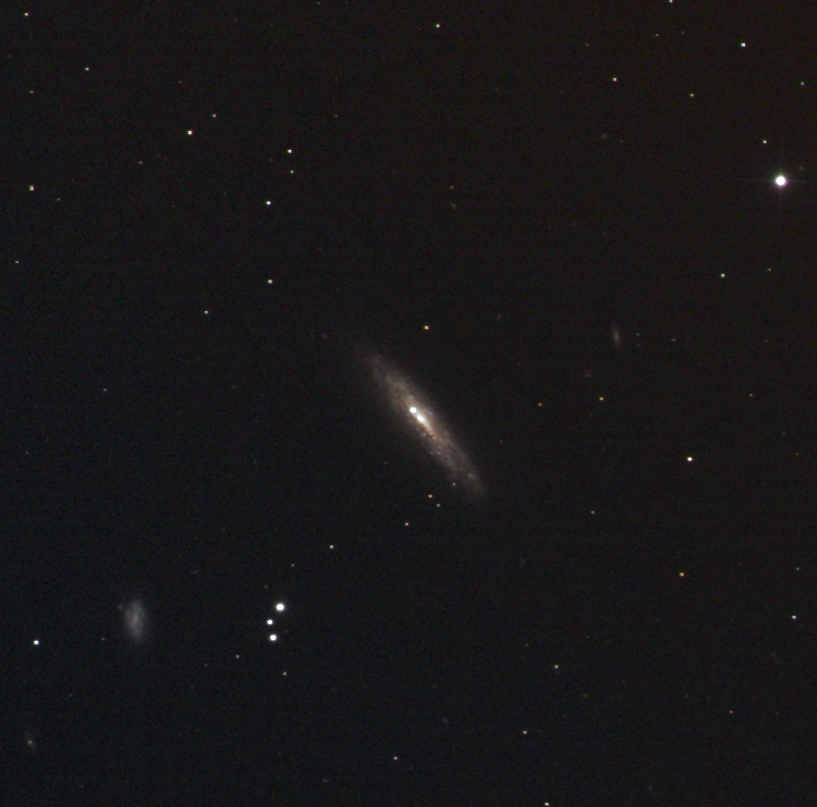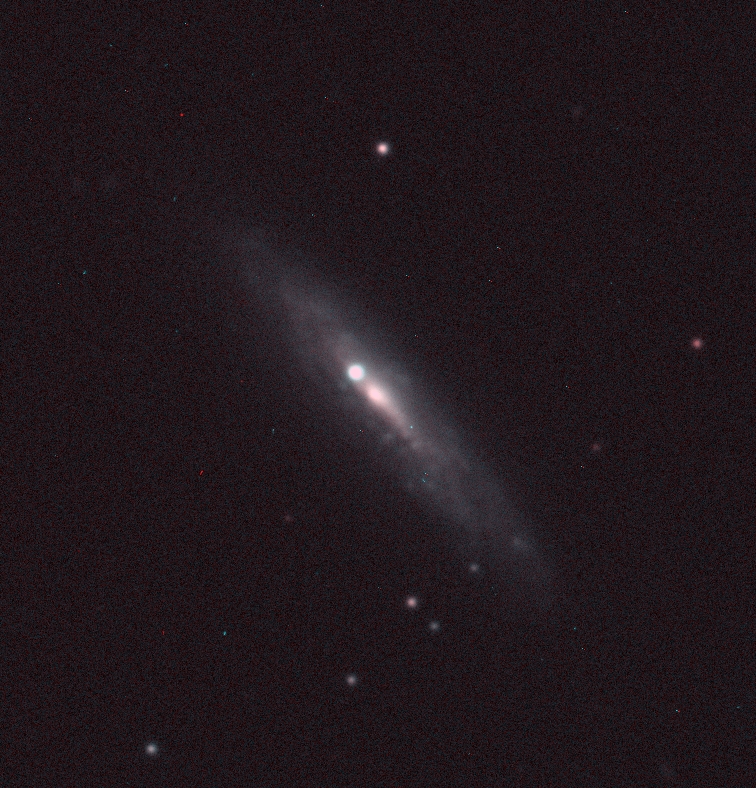
Assassin Picture of the Week
 | APOW Assassin Picture of the Week |

|

|
|
As we described before, when working on astronomical transients, besides having great people on your team (check) and excellent software and hardware (check), it is also good to be lucky. Unlike that time, this time we were a bit lucky. Normally, ASAS-SN robotic telescopes try to take an image of every spot on the sky once every few nights, weather permitting. In case of ASASSN-14lp, we observed the field with its host galaxy, The Superwind Galaxy NGC 4666 on December 8th, 2014, but as determined by our automated system, these images were of poor quality due to some clouds, so another set of images was taken on December 9th, 2014. ASASSN-14lp was easily detected in these images as a new object with V=14.3, so very bright aleady, and quickly confirmed using one of the robotic LCOGT 1-m telescopes. Spectrum of the transient taken the next day revealed ASASSN-14lp to be a Type Ia supernova (thank you, John and Erek!), and it continued to brighten, becoming bright enough to trigger HST UV spectroscopy follow-up program. ASASSN-14lp is now about V=12.0, easily making it the brightest known supernova currently on the sky, and it will remain bright for weeks to come. Here we show two recent color images of the supernova and its host galaxy, the one on the left made by our "ad hoc" collaborator Seiichiro Kiyota (Japan) using data from the 0.43-m telescope at Nerpio, Spain, the other one made by Tom Holoien using follow-up images obtained by ASAS-SN team with one of the robotic LCOGT 1-m telescopes. We don't mark the supernova, it is so bright it is obvious. There are many reasons why such bright and nearby Type Ia supernovae, while rare, are particularly valuable. We mentioned one already, namely they can be studied in great detail using a variety of ground and space telescopes. Second, about a year later, after the supernova fades significantly, one can take its spectra using a really big telescope to search for clues revealing the exact nature of these still mysterious events. Finally, for such a nearby host galaxy with a Type Ia supernova one could also use HST to look for Cepheid variables to help determine the Hubble constant from optical and infrared observations of Cepheid variables. We don't know if such observations will take place in this case, but NGC 4666 is certainly in HST range. So, again, stay tuned! |
Back to ASAS-SN page.
See previous APOWs:
ASASSN-14li: Possible Tidal Disruption Event in Progress
ASASSN-13co: Type-Defying Luminous Type II Supernova
Bright Supernova Discoveries Statistics
Bright Supernovae: ASAS-SN Contribution
First Light on the Small Magellanic Cloud from Chile
Congratulations to Tom and Jacob!
ASASSN-13dn: Spectra from a New Instrument
ASASSN-14ae, A Very Luminous Transient
Our Latest Paper, in Video Form
Host Galaxies of ASAS-SN Supernovae
Back in Real-Time Discovery Business!
Active (Some Less, Some More) Galactic Nuclei with ASAS-SN
Swift
Ultraviolet and Optical Follow-Up of ASASSN-13dl, Our Latest
Supernova
Dramatic AGN Outburst in NGC 2617
Two ASAS-SN Views of Orion Nebula
AAVSO Observations of Cataclysmic Variable ASASSN-13ck
Two ASAS-SN Supernovae in One Day!
Extreme M-dwarf Flare Observed by ASAS-SN;
Multiband photometric follow-up of ASASSN-13aw (SN 2013dr);
How ASAS-SN Discovers Supernovae: Case of Supernova ASASSN-13bb;
NGC 2617: Dramatic Seyfert Type Change;
ASASSN-13/SN 2013da: Our First Supernova Three Weeks Later;
This homepage is maintained by Tom Holoien and Kris Stanek.
Updated Fri Dec 19 14:44:30 EST 2014